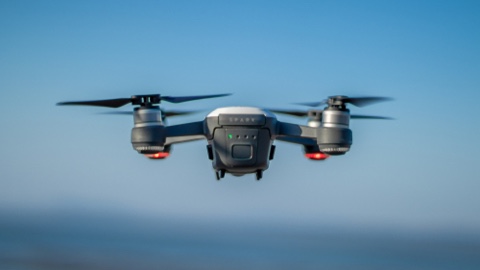
Engineers from Seoul National University in South Korea have developed a robotic appendage designed to give drones the ability to manipulate objects when needed. The arm – developed by roboticist Kyu Jin Cho and his team – is made up of seven actuators and a single wire that enables it to shift from folded to extended, similar to an umbrella being opened and closed. Inspired by the traditional Japanese folding technique origami, the innovative arm can be folded for transport and self-assembles into a rigid appendage. According to the engineers, this system is five times more resistant to bending and 200 times more compressible than with no stiffening mechanism. When folded, the robotic arm is only four centimeters long, and when extended, 70 centimeters.The arm can incorporate a gripper or camera on the end to suit its needs.
“Imagine using an origami-inspired design,” said Cho. “To make them easily fold-able, the structure becomes weak. If you make the structures strong, they are either heavy or not easy to fold. Our design is lightweight and easy to fold and unfold, but can become very stiff. Meeting all these requirements at the same time expands the usage of origami designs. Not just the drone arm we have shown, but imagine a robot that folds itself into a pack-able size and, when needed, unfolds by itself to become a robot.”
The research team stressed that this is just an initial concept and that they will be working to strengthen and add joints to the arm. Another area of weakness noted was that the robotic arm becomes unstable when the drone flies at speed with the arm extended.
A paper, with accompanying video, was recently published in the journal Science Robotics.
